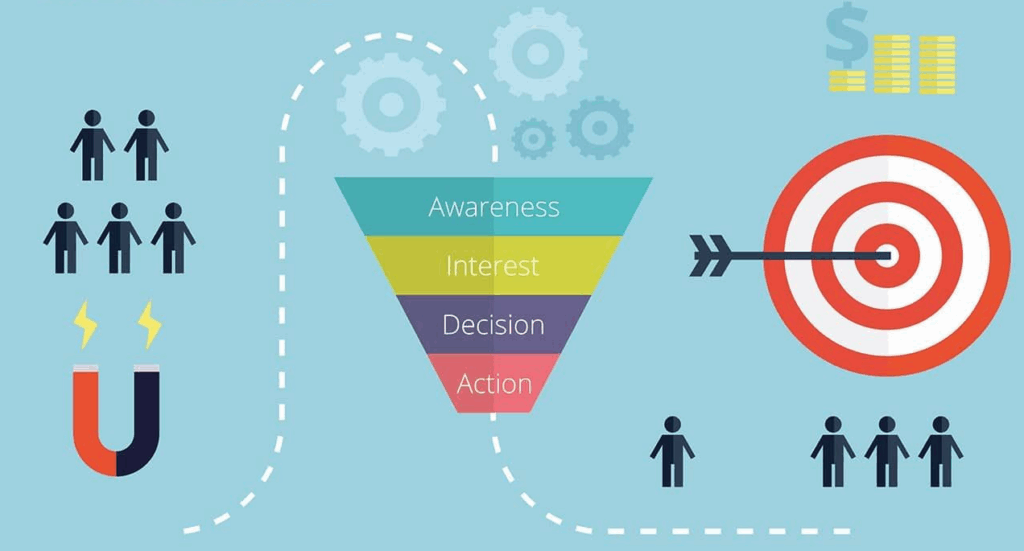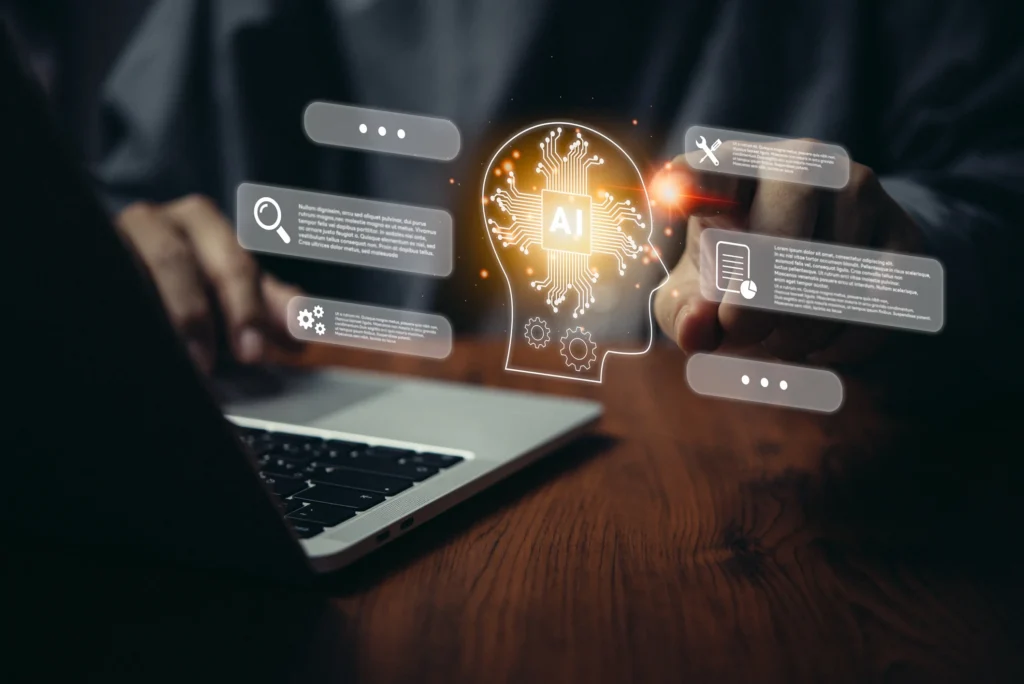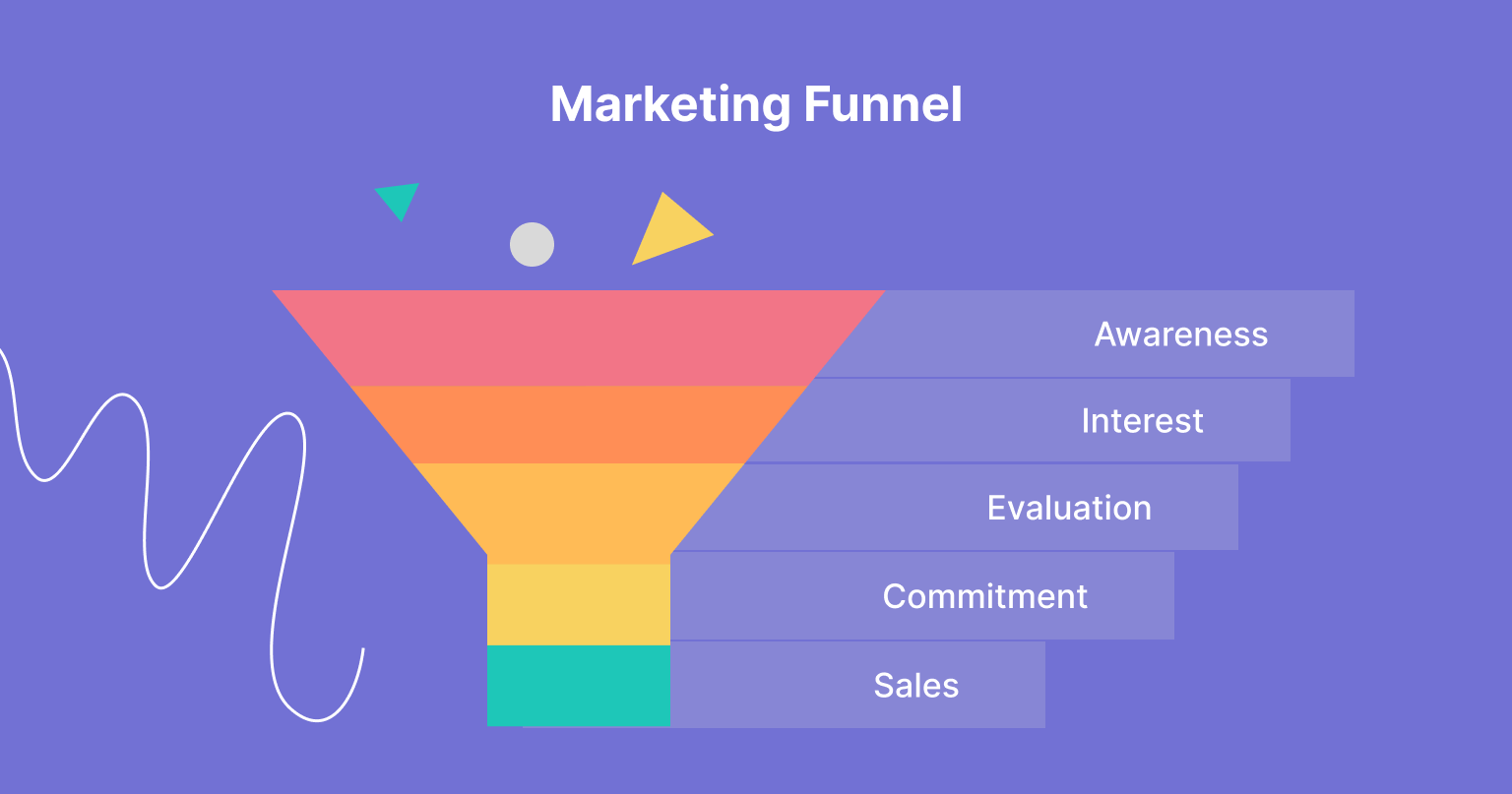In the complex landscape of digital marketing by 2025, funnels will be vital in guiding prospects through their journey from curiosity to engagement. The sales funnel and marketing funnel are two concepts that are often discussed. Each plays a unique yet interconnected role in driving business growth. Both funnels aim to turn prospects into customers, but their scope, goals, and execution are different.
This article compares sales and marketing channels, their purposes, and structures to help optimize strategies for marketers in an era of data-driven marketing.
Knowing the purpose of each funnel
Both funnels are essentially maps of the customer journey. They outline the steps that prospects take, from first awareness to the final action. The marketing funnel casts an extensive net to attract, engage, and nurture a large audience in order to build brand recognition and trust.
This includes the process of converting strangers into leads. It is often done across multiple channels, such as streaming TV ads, content marketing, and social media.
By contrast, the sales funnel is narrower and focuses on converting leads into paying clients. It is at the end of the customer journey and focuses on transactional outcomes such as purchases or subscriptions.
The marketing funnel feeds into the sales funnel. This creates a symbiotic relationship where one builds up the pipeline, and the other closes deals. Understanding these goals is crucial to aligning your strategies with your business goals.
The Marketing Funnel Structur

The marketing funnel is an ongoing process that involves several stages. Its goal is to build relationships with customers over time. The stages of the marketing funnel include:
Discovery: Prospects discover the brand via channels such as Roku ads or blog posts. A retailer may use a Hulu advertisement to reach viewers watching lifestyle shows and spark initial interest.
Engagement: Prospects engage with content by watching a webinar, downloading a guide or other means. A series of emails highlighting the product’s features can help to deepen the connection.
Evaluation: Prospects compare the brand with competitors and often seek reviews or case studies. A website that includes testimonials and is well-designed can affect their perception.
Conversion: While some marketing channels end with a sale, others focus on soft actions like newsletter signups or demonstration requests. These leads are then passed to the sales funnel.
This funnel is designed to focus on long-term engagement. Metrics like impressions, CTR (click-through rate), and lead generation rates are used. A campaign that achieves a 4% rate of engagement signals a strong audience, even if immediate sale is not the goal.
The Framework of the Sales Funnel
The sales funnel is an accelerated, conversion-driven system that continues where the marketing channel leaves off. The stages of the sales funnel are more transactional.
Lead Vending: Leads’ purchase intent is assessed, usually through scoring systems that are based on form submissions. SaaS companies might give priority to leads who request a demo.
Offer presentation: A brand offers a customized solution, like a discount or a free trial. This stage is driven by a landing page that has a clear CTA (call-to-action).
Handling objections: This is especially important in B2B. It involves personal follow-ups to address concerns such as cost or implementation.
Transaction: The lead performs the desired action, such as signing a contract or buying a product. A smooth checkout process is essential to success.
Bottom-funnel metrics such as conversion rate, CP, A, or sales cycle are used to evaluate the effectiveness of a funnel. A $10,000 Roku campaign that yields 200 sales, for example, has a CPA of $50, which reflects an efficient conversion.
Comparing Scope and Scale
The scope of the two funnels differs most significantly. The marketing funnel covers the entire customer journey, from awareness to advocacy. The marketing funnel engages a wide, diverse audience, including those who are unfamiliar with the brand, using channels such as Hulu advertisements, content marketing, or social posts. The sales funnel is a subset that targets a smaller group of leads who are ready to purchase.
This contrast is highlighted by the size of the audience. The marketing funnel may reach 1,000,000 viewers via a Netflix campaign, but after engaging with the landing page, only 2,000 people might enter the sales channel. The marketing funnel creates the pipeline while the sales funnel refines the funnel to ensure only the most high-intent leads progress towards conversion.
A second distinction is the time horizon. Marketing funnels are designed to operate for weeks or even months. They nurture leads by educating and engaging them. Sales funnels tend to be shorter and last for a few days or even hours. They are focused on the immediate transaction.
This difference shapes resource allocation–marketing funnels require sustained investment in content and reach, while sales funnels demand precision in offers and follow-ups.
Modern Marketing: Practical Applications

Marketing funnels are excellent for building brand equity and generating new leads. Marketing funnels can be used by a consumer goods company launching a product to generate buzz. They might start with Roku ads, which drive awareness, then blog posts, which spark interest, before offering free trials to encourage evaluation. It is important to reach a wide audience, even if a small percentage converts.
Contrary to this, sales funnels are designed for revenue generation. A retailer could use a funnel to convert leads generated by a marketing campaign. They might send them an email with a limited-time discount and direct them to a checkout page optimized for their business. In B2B scenarios, a consulting company could use a funnel to close deals after a webinar with leads, and follow up with customized proposals and negotiations.
Both funnels are dependent on each other. A strong marketing funnel will ensure a constant flow of qualified lead,s while a sales funnel that is effective maximizes conversion efficiency. A misalignment, such as a funnel that attracts low-intent prospects, can increase CPA and decrease ROI.
Measure and optimize performance
To measure success, each funnel uses different metrics. The marketing funnels are based on the top and middle of the funnel indicators.
Impressions and Reach: Measuring visibility like a Hulu advertisement reaching 300,000.
Engagement Measurements: Track the CTR (or engagement rate), such as a 3 % CTR for a social advertisement.
Lead volume: Quantify soft conversions like 1,000 signups for a content marketing campaign.
Bottom-funnel metrics are given priority in the sales funnel:
Conversion rate: Percentage (e.g., 6%) of visitors to the landing page who complete a purchase.
CPA: Cost effectiveness, for example, $40 per sale in a Roku campaign.
Time To Close: The duration from lead qualification through to sales is critical for B2B.
These metrics can be monitored using tools like Google Analytics or Salesforce. Optimizing involves A/B-testing, comparing CTAs, landing pages, and ad creatives to identify what drives results. Testing two Hulu ads might reveal that one version lowers CPA by 15 percent. Retargeting campaigns help reengage dropped prospects, increasing the efficiency of both funnels.
Confronting the Challenges of Funnel Management

Both funnels face unique challenges. The marketing funnels may suffer from mismatches in audience, which attract unqualified leads and clog the pipeline. This can be mitigated by refining targeting. For example, focusing Roku advertisements on demographics with high intent.
A complex checkout process or an unclear offer can discourage conversions. The results of streamlining processes like enabling single-click purchases are improved.
Data integration is a common challenge. Data from platforms such as Hulu, X or email campaigns may be separated, obscuring valuable insights. Tableau and other dashboards consolidate data to provide a comprehensive overview. Privacy regulations such as the CCPA limit tracking and require compliant data practices in order to ensure accuracy.
Trends that can be used to improve funnels
The funnel landscape changes with consumer and technological trends. AI-driven analytics integrated into platforms such as HubSpot predict funnel performance and identify bottlenecks, like high CPA or poor engagement. Shoppable ads are growing on CTV platforms such as Roku. They blur the lines between funnels and allow marketing ads to drive sales immediately via QR codes or hyperlinks.
Both funnels benefit from location-based targeting. Hulu’s IP-based targeting could be used to target local viewers in a marketing funnel, while geo-specific discounts would be offered to close sales. Dynamic content allows for the personalization of marketing messages and sales offers based on user behavior. This will boost efficiency in the competitive market by 2025.
Synergizing Funnels to Achieve Strategic Success
When comparing the marketing and sales funnels, it is clear that they play complementary roles in driving successful business outcomes. The marketing funnel lays a foundation by nurturing prospects through awareness and engagement. Meanwhile, the sales funnel focuses on converting leads to customers.
Marketers can achieve sustainable growth by aligning these frameworks, ensuring that marketing efforts generate high-quality leads for sales processes. Data, testing, and trends such as AI and shoppable advertisements will ensure that both funnels are effective and convert prospects into loyal customers.


